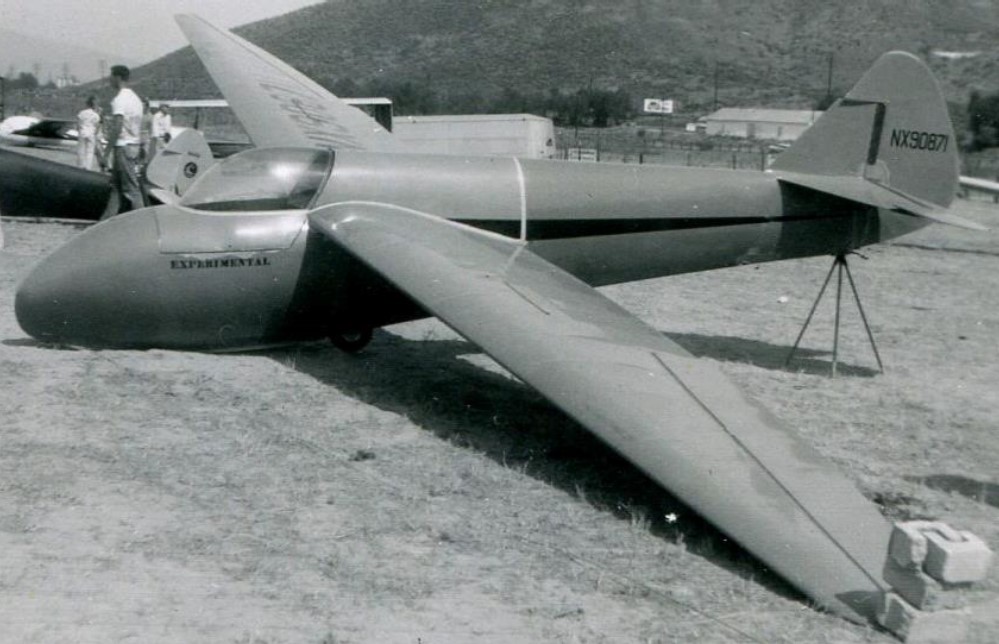Rigid Midget Sailplane

The Culver Rigid Midget is an American mid-wing, single seat glider that was designed by Irv Culver in 1941. The prototype was constructed by Ray Parker and Bill Bowmar and completed in 1947.
Culver designed the Rigid Midget in 1941, but due to the Second World War no prototype was constructed until 1947.
The aircraft is constructed from wood, with the wings and tail surfaces finished in doped aircraft fabric covering and the fuselage covered in wood. The wing is of a small span at just 38 ft. Landing gear is a fixed single wheel.
The Museum owns the first Midget built by Parker and Bowmar and is registered with the FAA as a Bellow Flex CC 4-36.
The Midget was completed in time for Parker to fly the aircraft in the 1947 US Nationals, held at Wichita Falls, Texas, in which he finished third. Parker’s flights at that competition included a 235 mi flight.

Bowmar and Parker flew over 1000 hours in the aircraft and noted that it had nice handling characteristics, no vices and, with its short wingspan, was highly maneuverable. Bowmar completely restored and rebuilt the aircraft in about 1971.
Currently the Midget is in our restoration hangar and almost ready to return to flight.

About the Designer:
Irven Harold Culver (b. 1911, d: August 13, 1999) was an American aeronautical engineer.
Most notable of all his accomplishments, Culver is credited for solving a fatal flaw in the Lockheed P-38, which killed several pilots.
A humorous episode during World War II resulted in giving the very secret Lockheed Advanced Development Projects division the name “Skunk Works”. A phone call to W. A. “Dick” Pulver was misdirected to Irv Culver who answered the phone with “Skonk Works, inside man Culver” and the name stuck. Another variant of the story relates that the original Skunk Works was located in a circus tent adjacent to the Lockheed plastics fabrication facility which smelled bad and reminded the engineers of the L’il Abner comic strip. Reportedly, Culver showed up for work wearing a civil defense gas mask as a gag and when he answered the phone he said “Skonk Works” referring to the cartoon. “Kelly overheard him and chewed out Irv for ridicule: “Culver, you’re fired,” Johnson roared. “Get your ass out of my tent.” Culver showed up for work the next day and Johnson never said a word. Kelly Johnson referred to Culver as “a brilliant designer” in his autobiography.
Culver was interested in a variety of aircraft configurations and developed guidelines for laying out the twist distribution on tailless aircraft. He also helped to design an experimental helicopter, distinguished by a forward-sweeping blade, that was extremely easy to fly. In 1966, Culver, Thomas Hanson and Lance Hook were awarded a patent for a rigid rotor system which set world speed records for Lockheed helicopters and laid the foundation for aerobatic rotorcraft. It earned Culver the Dr. Alexander Klemin Award from the American Helicopter Society.
